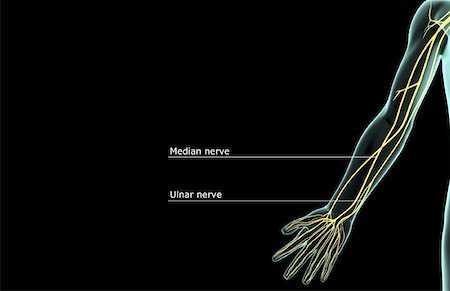Golfer’s Elbow: It’s Causes and What To Do About It
Golfer’s elbow. Also known as medial epicondylitis. The name refers to golfers due to the frequent ballistic forces that occur in the down swing to the medial elbow. This causes irritation to the bony attachment and its common wrist flexor tendons (shown in picture below). This pathology is also seen in throwing athletes as well as vocations that involve hard gripping such as welders, carpenters, etc. This blog attempts to identify medial epicondylitis’s causes as well as their fixes in relation to the golf swing. Three common causes of golfer’s elbow are over-recruitment of common flexor tendons of wrist elbow, common flexor tendons that do not have the resilience and stability to meet the demands of the golf swing, or the symptoms are, in fact, radicular in nature.
Often times, golfers overuse their common flexor tendons during their swing. Shot after shot, round after round. Your body can take the repetitive stress until it can’t. As a result, pain in the medial elbow occurs. The cause of overutilized common flexor tendons usually lies in a grip fault, rather than a swing fault. Check your grip. If you require a second set of eyes, have a golf pro or TPI certified physical therapist look at it. The club should be held in the line of your fingers more than the palm, which will inherently reduce the amount of common wrist flexor tendon activation. Like many issues in the golf swing, the solution can lie with a simple grip fix!
Next, it may very well be that your elbow simply doesn’t have the resilience, strength, and stability required to endure the violent torque and whipping nature of the golf swing. If this is the case, it is extremely important to have a physical therapist assess your elbow and determine the appropriate rehab level. If mismanaged (such as simply working on strengthening your elbow), symptoms can get worse, fast. Careful assessment and evaluation will determine the type of strengthening, volume, frequency, and intensity that will be utilized. From there, patients can progress to more intense and ballistic motions, until it can tolerate the severe, repetitive stress of the golf swing. Elbow stability is an extremely important prerequisite of the golf swing.
Finally, medial elbow symptoms are often disguised as golfer’s elbow, but are in fact, radicular in nature. What does this mean? The symptoms are actually coming from your nerves rather than your muscles and tendons. We call this radicular pain. Let’s envision numerous branches of nerves coming out of our spinal cord (pictured below). Somewhere down the tract, whether it be the neck, shoulder, or down the arm, there is tension or pinching. This can cause pain further down the arm and often times in the medial or lateral elbow. Depending on the severity of the tension or block, it can also cause numbness, tingling, or weakness, in which case it is known as radiculopathy. Treatment for this pathology is highly skilled and generally does not involve strengthening, but rather mobility and postural work. It is highly recommended to work with a physical therapist for these types of symptoms due to the skilled nature of this type of evaluation and treatment.
These are just a few common causes of golfer’s elbow. Other differential diagnoses include ligament rupture, elbow fracture, and more. If you are having medial elbow pain during or after your golf swing, or any intense gripping maneuver, consider seeking help. The PATH Rehab & Performance has a Doctor of Physical Therapy that understand the mechanics of the golf swing as well as the causes and treatment for pain. Try a free thirty-minute phone consultation in which we can discuss symptoms, goals, and answer any questions and/or concerns you may have. If you are having pain, it doesn’t have to be that way. Let’s get you golfing 18 holes pain-free today!
Dr. Cody Benavides
PT, DPT, MFDc
Co-Owner | The PATH Rehab & Performance



